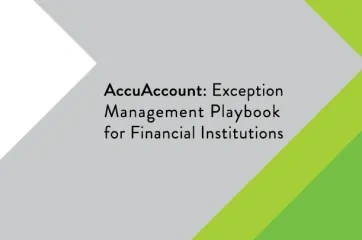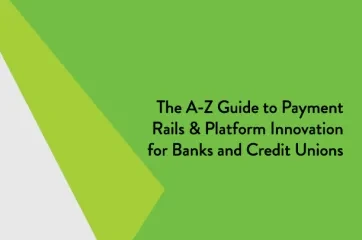Exceptions in Banking
An exception in banking refers to any item that requires attention because it does not meet certain predefined requirements. Many banking exceptions fall into four categories:
- Incomplete information
- Insufficient data
- Expiring documents
- Required actions
Each exception category is discussed in further detail below.
Incomplete Information
During a quality control review, for example, a loan assistant or loan servicing specialist may notice that some items are missing from a file. Exceptions in this situation may include:
- Signatures on documents
- Information on forms
- Documentation that confirms the bank has a lien against certain pieces of real estate, equipment, accounts receivable, etc.
- Customer/member tax returns
Insufficient Data
Another type of exception involves a situation in which an item was completed but not done to the standard necessary. For example, perhaps a full real estate appraisal was needed, but the report falls short. In the case of a commercial piece of property, this may occur when a phase one environmental check was required, but only a quick search was completed.
Expired Documents
Exceptions can also take the form of expired documents. Financial institutions commonly use spreadsheets or desktop tickler files that indicate when information should be updated. Among these types of exceptions are:
- Insurance policies
- UCC documents
- Customer or member financial statements
Required Action
It may be necessary for a bank or credit union to send an employee (or a hired third party) to perform a specific type of action. Common examples include:
- Inspecting building progress on a construction loan
- Counting cattle used as collateral on a commercial loan
- Checking car dealership inventory
- Conducting an annual credit review for a loan
Exceptions and Risk Management
In the financial industry, a small number of exceptions might mean one of two things. Without reliable exception management procedures, low exception numbers could indicate that a bank or credit union is simply missing many items from its files but does not realize it. A robust tracking and management system will lead to fewer exceptions as well—but in this case due to efficiency instead of error.
Banks and credit unions are increasingly relying on core-integrated exception tracking software such as AccuAccount to streamline their processes and enhance overall safety and soundness. Proper exception tracking helps a bank or credit union manage and reduce risk by:
- Quantifying deficiencies in its portfolio
- Tracking the financial well-being of its borrowers
- Checking that collateral is perfected
- Confirming that mortgaged property is insured
Exception Tracking Resources
Looking for more information about exception tracking? Be sure to check out our extensive resource library with free spreadsheets, whitepapers, and eBooks.
Browse our banking definitions page for more terminology.







